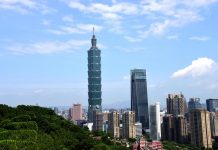By Yuan Yuan
Shaanxi: Using a laptop for an hour—13 grams. Watching television for an hour—96 grams. Taking a bus for a km—8 grams. This is the list Hu Jing makes each day when calculating the carbon dioxide emissions of her daily activities. “My home activities alone can release over 1,000 kg of carbon dioxide each year,” Hu, a resident of Shenzhen, Guangdong Province in south China, told Shenzhen Evening News. “Planting trees is a good method to deal with this. In my case, at least 70 trees need to be planted to offset the carbon dioxide released by my activities.”
Every March, Hu travels with friends to plant trees in Dapeng, a seaside district of Shenzhen. In 1979, March 12 was set as China’s Arbor Day, or National Tree-Planting Day and, in 1981, the country launched a nationwide tree-planting campaign, suggesting that every able-bodied citizen between the ages of 11 and 60 should plant three to five trees per year.
In recent years, tree-planting has become a popular spring outing for Shenzhen residents. Areas designated for tree planting are usually located in picturesque suburbs with beautiful sceneries. The saplings and tools are already prepared for visiting volunteers, who can also go sightseeing after planting trees.
However, planting three to five trees per year is not enough to reach Hu’s green goal. She also uses Ant Forest, a mobile app launched by China’s e-commerce giant Alibaba that rewards users with virtual energy credits when the users take low-carbon actions, such as walking or using public transport instead of driving. After users receive a certain number of credits, a real tree is planted on their behalf in the desert of China. Users can check the location of their trees using a map included in the app.
Use of the app has grown rapidly since its launch in 2016, and by October 2020, it had attracted 550 million users, many of whom are members of China’s younger generations.
A four-decade campaign: It has been 40 years since China adopted its national tree-planting initiative. Liu Dongsheng, Deputy Director of the National Forestry and Grassland Administration, recently told Xinhua News Agency that the forest coverage in China has increased from 12 percent in the early 1980s to 23.04 percent at present. By 2025, China aims to further increase its forest coverage to 24.1 percent. Currently, China’s artificial forests are ranked first in the world by area.
This is no easy achievement, as many of the greened areas were formerly barren mountains and deserts. When Yao Wuchen moved with his family to Liuba County, a mountainous area of Shaanxi Province in northwest China in the 1930s, he could hardly see any greenery around. In late 1949, when the county encouraged locals to plant trees in mountainous areas as part of national greening efforts, he was among the first group to take action.
Since then, tree planting has become a life-long mission for the five generations of Yao’s family. It is a tradition in the family that each member joins in the tree planting from childhood. Now the forest coverage rate of Liuba County surpasses 90 percent.
Younger members of the family not only planted trees, but also developed under-forest economy. Yao’s grandson, Yao Huilin guided locals to plant American ginseng as a means to increase income, and Yao’s great-grandson, Yao Zuyuan, born in 1986, took the lead in planting valuable herbs.
–The Daily Mail-Beijing Review news exchange item






